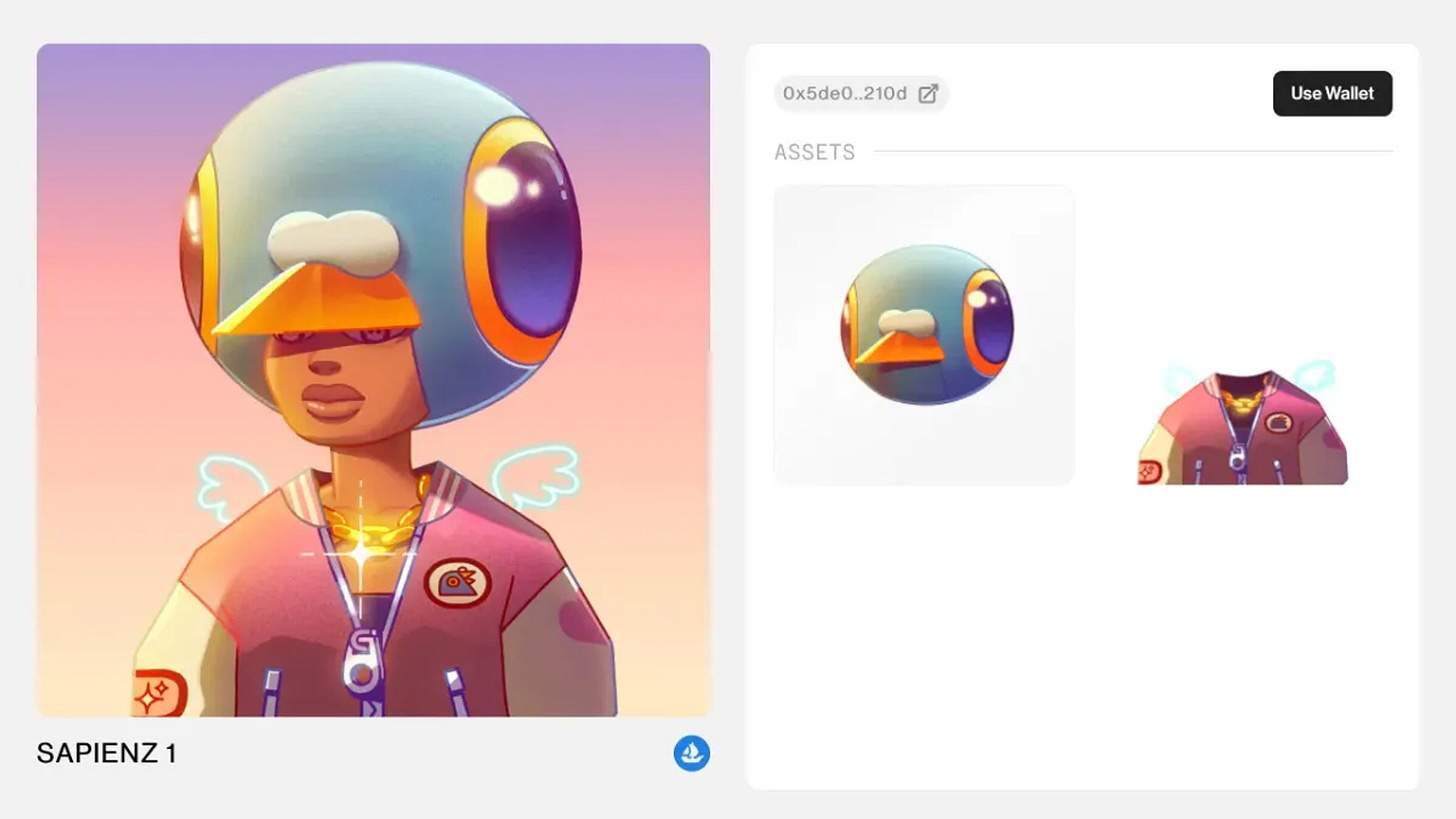Introducing Token Bound Accounts with ERC-6551: The game changing NFT standard
Every NFT is able to own its smart contract wallet
ERC-6551: https://eips.ethereum.org/EIPS/eip-6551
Dashboard: https://dune.com/sixdegree/erc6551
Discussion Link: https://ethereum-magicians.org/t/non-fungible-token-bound-accounts/13030Summary
The new proposal grants every ERC-721 token the full capabilities of an Ethereum account while maintaining backwards compatibility with previously deployed ERC-721 token contracts.
In other words, the ERC-6551 introduces the Token Bound Account (TBA) concept. It allows ERC-721 tokens to own assets and interact with applications, without requiring changes to existing ERC-721 smart contracts or infrastructure.
Why it matters
It could spark a usage history of NFTs in terms of DAO loyalty programs that use NFTs as a binding mechanism, linking all reputation to the NFT itself and much more.
The big picture:
TBAs can be created via a registry contract with the NFT as the owner, and NFT owners authorized to execute on-chain actions using it. This provides transaction records, signature control, and ownership links that are empowered for each NFT. As a result, the increased ownership of assets and transaction history could potentially add their respective values
The following diagram illustrates the relationship between ERC-721 tokens, ERC-721 token owners, token bound accounts, and the Registry:

Use cases
ERC-6551 enables NFT composability, facilitating use cases like game character management and asset management as well as breedable cats, generative artwork, and liquidity positions.
The TBA could assist in metaverse and digital fashion with avatars holding assets and bonding via NFTs. The display of the avatar is determined by the NFT that it has equipped.
There are a vast series of use cases including
Inventory system for owning items, outfits, equipment
Community loyalty or reputation systems
Minting or curating baskets of assets (art, collectibles, defi)
Composable media structures (stems to songs, art layers to painting, digital textiles to garments)
New on-chain game mechanics
On-chain meme/derivative economies
NFTs as onboarding vehicles instead of wallets
What we're watching:
Sapienz ( https://twitter.com/stapleverse )
LOM Baby ( https://collective.xyz/lombaby )
Data-Driven Insights
ERC-6551 has been adopted by a total of 140 users who have created 415 token-bound accounts with 66 NFT collections. Sapiens is driving adoption of the new erc-6551
These figures reflect the growing interest as well as the potential for further adoption in the future even though it is still very early.
There has been a noteworthy surge in the count of accounts and users utilizing TBAs since June because of Sapienz.
On June 1st, the Sapienz project initiated an airdrop, distributing Sapienz NFTs to preminters and early minters and officially launched Sapiens.The airdrop served as a catalyst for heightened engagement, as users eagerly awaited the opportunity to receive these sought-after NFTs. Sapienz is a digital fashion project. By incorporating TBAs, each individual Sapienz is empowered to personalize their own avatars, allowing for a wide range of fashion-focused transformations, including clothing and styles.

Half of all TBAs are created on top of Sapienz, the first ERC-6551 adoptor.
Although ERC-6551 demonstrates compatibility with all types of NFTs(ERC 721, ERC1155, etc.), the prevailing token bound accounts predominantly pertain to ERC-721 tokens.
Some TBAs are currently carrying valuable NFT assets, such as Azuki and Doodles, as well as token assets like USDC and CAPY.
However, a majority of these TBAs were merely created and are not holding any assets at all. Most people are excited about the potential new paradigm but not willing to undertake the underlying risk.







